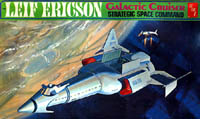


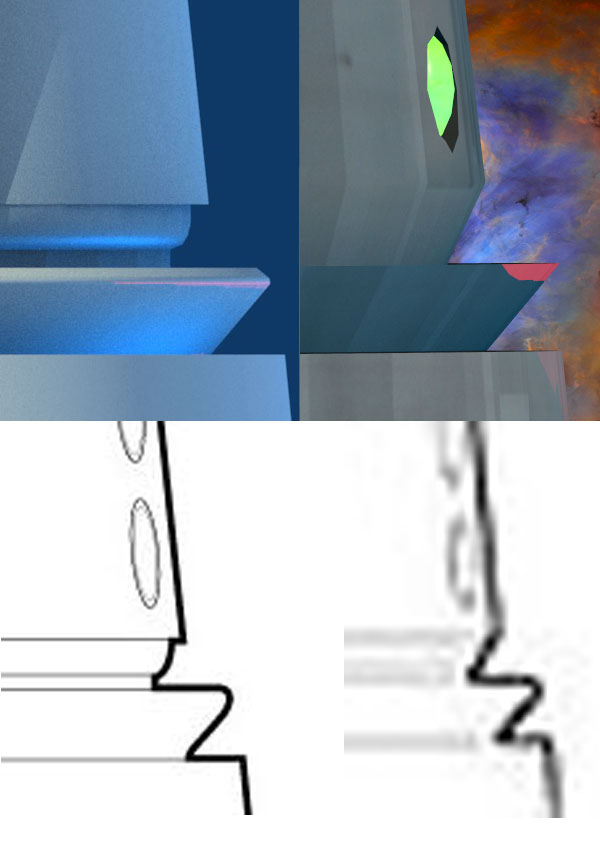
Well, done lots of Blender projects since I made the Leif Ericson mesh, and have gained lots of expertise in Blender. So I decided to re-do the Leif Ericson, totally from scratch. Not only was the original mesh partially an adaptation of Atra-Hasis' Lightwave mesh, but I made it accurate by using the lo-res version of Robert Lee Merrill's blueprints. I decided to start with hi-res blueprints. You can see the results above. The old mesh/lo-res blueprint is on the right, the new mesh/hi-res blueprint is on the left
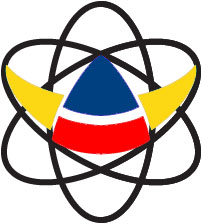

For test purposes, I decided to use the original model decals. The decals were terrible, so I had to recreate them. I originally had the ovals in the atom symbol with thin lines. Unfortunately they were almost invisible on the mesh, even with a white border. After I thickened them up they were much more visible.
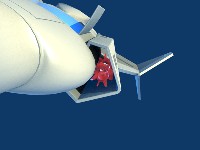
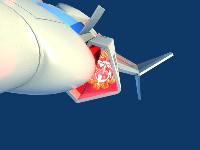
|
The engines in the original mesh were a real pain to rig with red lights. I used a different setup, and added more Blender halo-style textures to make the engines flame with raw energy. I also had to put the engine mesh on a different graphic layer to prevent them from casting a shadow. |
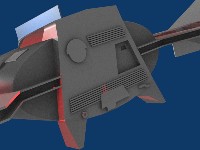
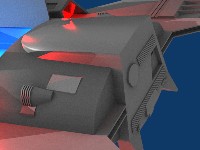
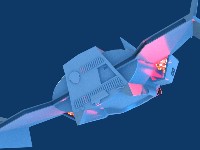
|
The detail on the aft of the ship was not difficult, just tedious. |
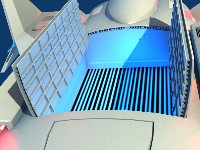
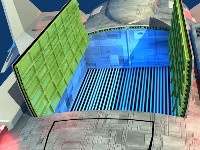
|
I also painstakingly cut "lightening holes" in the edge of the hangar bay doors, because I cut my teeth on "Voyage to the Bottom of the Sea". On my original mesh they were not actual holes, just black hexagons. The inner surface of the doors are colored good old zinc chromate green, like all good military cargo aircraft. |

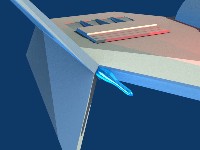
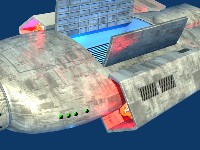
|
The landing skid was probably the most difficult component to sculpt. The prongs on the wing tips was easy to sculpt, hard to texture. I ended up making it transparent, with a smaller duplicate as an inner core layered with a chrome texture. I also went to the trouble of cutting the funny lines into the wing. The hull texture is from a freeware set of textures created by Marc-Laurent Magnier. |
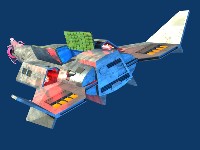
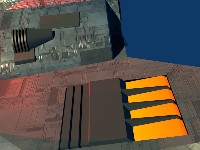
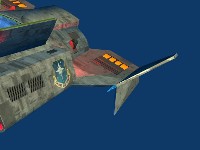
|
The weird gizmos on the wings bothered me. They look a little like ducted fans or thrusters. But the wings are far too thin to accommodate any fuel pipes. By the same token any thrusters mounted on the wings would produce enough force to snap the wings in two like the balsa wood wings on a rubber-band airplane toy. So I figure they are some kind of heat radiator. For dramatic effect I made them glow orange hot. In reality, any heat radiator glowing brighter than dull red is probably hot enough to start vaporizing. I also turned into radiators the series of pipe features on the underside of the ship's neck. |
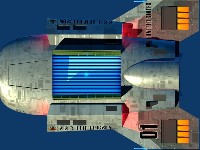
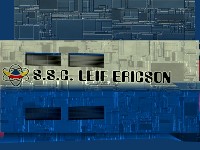
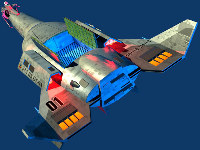
|
Here are the decals from the plastic model kit applied to the Leif. As I said before, this is for test purposes. It is hard to take seriously that "Yellow Submarine" type font, even if it is deliciously retro. Again I had to beef up the black ovals in the atom symbol because thin line ovals would blend into the hull texture. I painted the part of wing aft of the funny wing lines a dark grey since that's how I painted my plastic model back in 1969. That can be easily changed, of course. |
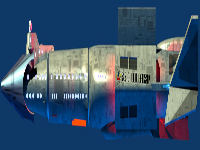
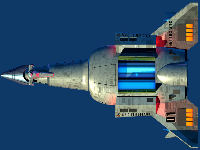
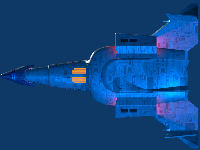
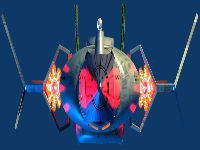
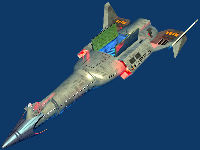
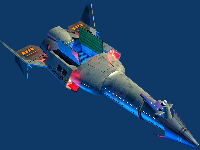
|
And here are some large orthographic views of the Leif. |
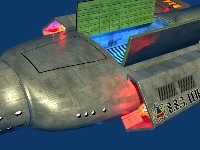
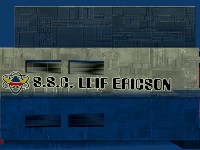
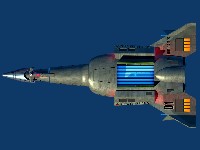
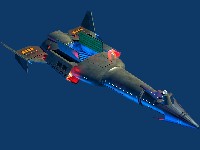
|
Modelmaker Frank Henriquez (author of the noted Leif Ericson website) liked the mesh but the texturing bothered him. He questioned the mottled appearance, and the lines incised by bump-mapping was a little over the top. I saw his point. I was using textures created by Marc-Laurent Magnier. Each style has four images: one for surface color, one for the bump map, one for specularity, and one for reflection. I figured that the mottled appearance was due to the color map. Silly me, it was the reflection map. After a lot of experimentation I cranked up the color map to be darker (but not too dark or the decals vanish into the texture), reduced the specularity a bit, reduced the reflection by a lot, and lowered the level of bump mapping. You can see the result. |
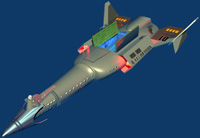
|
For purposes of illustration, here is a sample of the ship with a plain gray skin. |
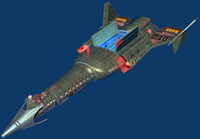
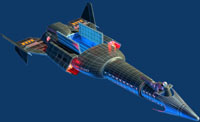
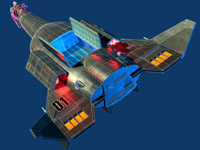
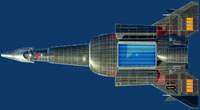
|
With a simple (but tedious) process, it is possible to draw a wireframe on an image. Shameless plug: the second image from the top is
available as a poster
|